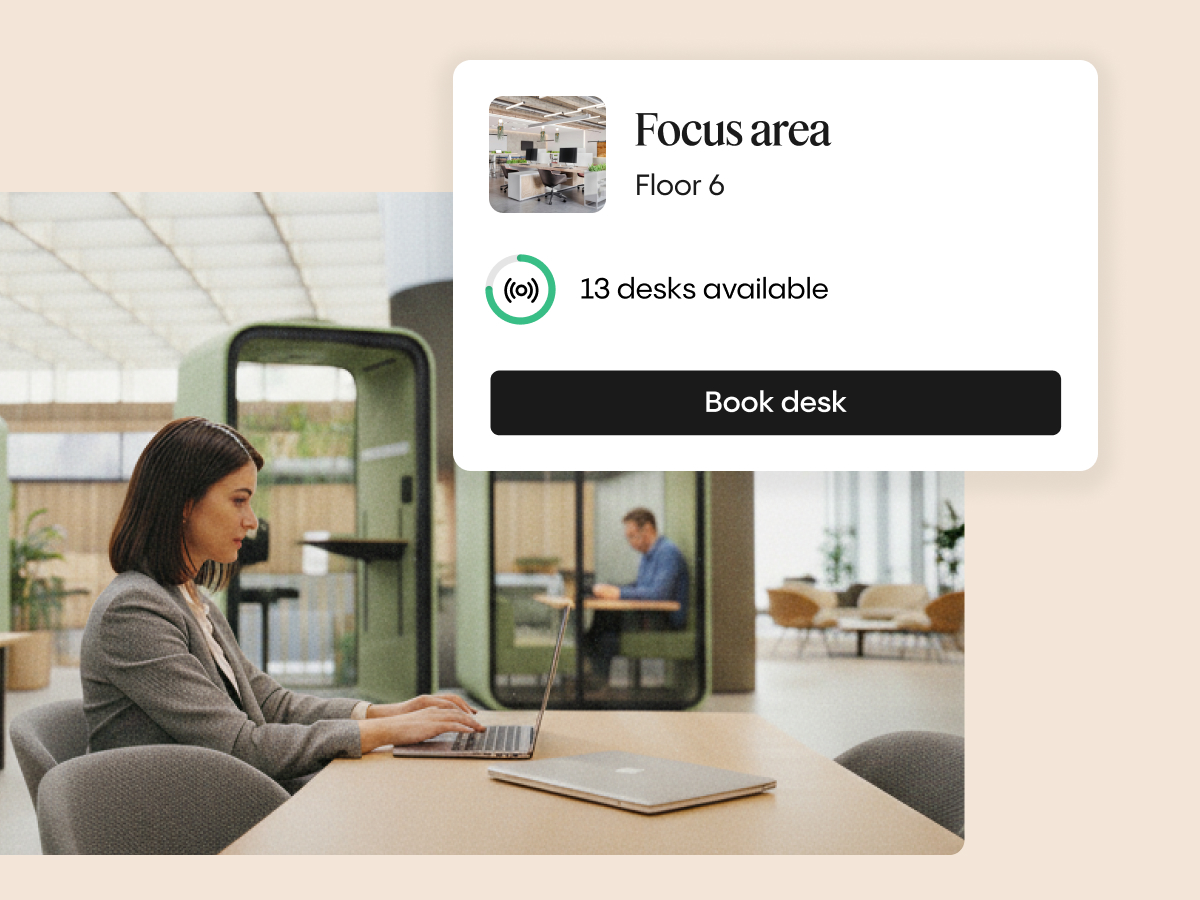
JLL research shows that on average, 40% of corporate space is underutilized. Empty buildings, floors, and workspaces are a waste of money. Last year, everybody knew office buildings were deserted. But usually, it can go unnoticed. Nobody is walking around the office all day to check and report if rooms are occupied or not. So, with commercial real estate undergoing a dramatic shift in 2021, how can you optimize your building space? Here are 4 tips to get the most out of your real estate portfolio.
1. Design flexible workspaces
If there is one head start you can get for your offices worldwide, it’s to turn your buildings into flexible workspaces. According to the Fast Company, change is the new normal, and nothing in an office should be permanent or fixed. With fewer employees in the office, floors for specific departments, or assigned seating result in unoccupied spaces for a big part of the workweek. Companies should design flexible workspaces to be prepared for unplanned situations. So, when change happens, the office is ready.
Start with defining the activities employees do during the day and then create dedicated places for them. Think about brainstorming areas for creative projects, focus zones for working alone, and conference rooms with good AV-equipment for hybrid meetings. This way, you build a workplace that is based on activities instead of function titles. The next step is workplace technology. This can help employees find the right workplaces for their activities and share office facilities safely.
2. Collect smart building data
Office space is something companies generally try to reduce. In the past, this worked –for example through the use of bench seating– but nowadays with the social distancing requirements, offices need more square feet per worker. Smart building data can show how your spaces are used and how many people are working on specific floors. The first thing you have to do here, is to start collecting the right data to analyze your office.
If you measure the utilization of your offices, you can see how much you should downsize or increase the office space. You can for example look at the occupancy, capacity, density, and overall space utilization. Smart building data can help you to see real-time how your building occupancy is changing. This way, you can use occupancy insights to make the right changes. As a result, you can cut down on building costs and reduce or increase your office space when you have to renew your lease.

3. Change workplaces to the needs of employees
The office will remain an important part of our business, but the way we use it will change. Employees will spend less time in the workplace than ever before. For that reason, it’s essential to find out how people use the office space. Employers found out that activities like coaching, collaboration, and building relationships are much more effectively done in person. This will affect the way employees use your office from 2021 and onwards. With data insights of your building, you can change workplaces to the needs of employees.
For example, if you see that certain spaces in your office aren’t used that often or at all, you can change the purpose of the space. Think about a focus room that is empty most of the time, while the brainstorming area next door is always fully booked. Data can give you these insights, so you can turn the untapped potential of your building into effective use of space.

4. Embrace remote work
More than 20% of employees could work remotely three to five days a week as effectively as they could if working from an office. If you offer the possibility to your employees to work from home, this impacts your office capacity. But fewer employees in the office doesn’t immediately mean that you need less office space. 63% of the emerging trends survey respondents of PWC, felt that the office requires more square feet per worker than what was required for the pandemic.
Encouraging remote work for a couple of days a week, can help you use your building more efficiently and make it the perfect place for 30, 40, or 50 percent of your employees –depending on your office policy. This so-called hybrid way of working is getting more and more popular. While you reduce office space and make it fit the needs of your employees, you’re making the essential changes for a future-proof office. At the same time, you still allow employees to work remotely if they want to for part of their workweek. Technology can help you set a safe office capacity, and let employees book a shift in the office in advance.
Prepare your real estate for the future of work
If you want to get your portfolio ready for the future, you need to incorporate technology into your buildings. Technology can guide employees through the workplace, balance remote and office work, and help you to stay on top of the needs of your employees. Next to that, the data that workplace tech collects show you where you can make strategic choices about the space you own or rent, so you can reduce unnecessary building and operation costs.
Curious to know more? Get in touch.


.jpg)
